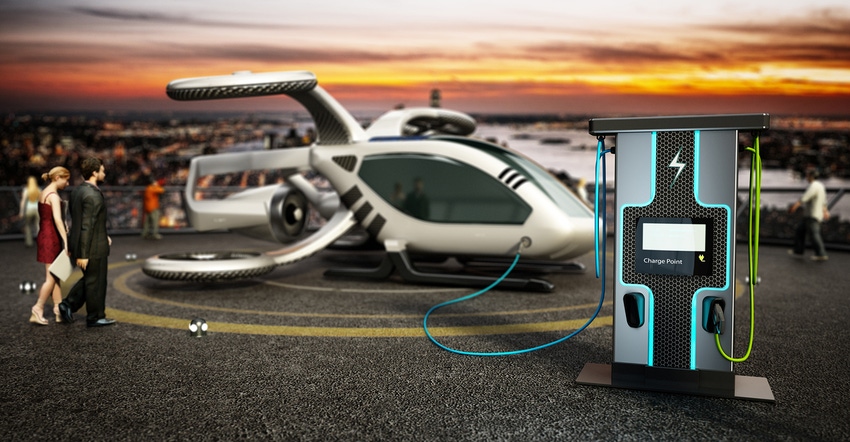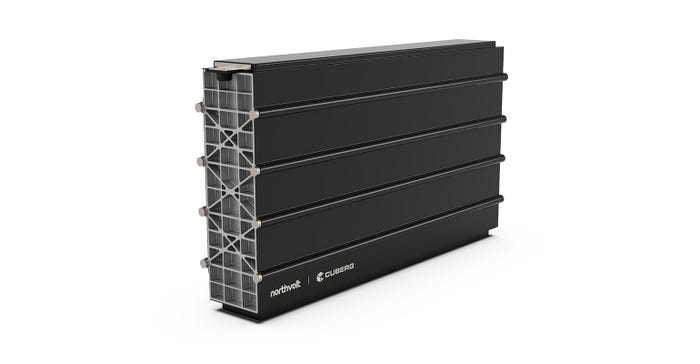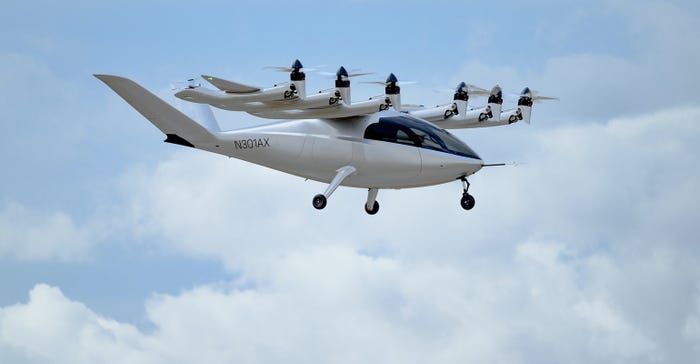
Advances in electric propulsion, battery technology, lightweight materials, and autonomous systems have paved the way for electrified aviation. These technological developments have opened opportunities for startups to create innovative solutions for electric vertical takeoff and landing (eVTOL) aircraft: We looked at 11 of them recently. But many challenges remain.
Electric aviation challenges
While battery technology is a crucial enabler of electric aviation, several challenges must be addressed for the widespread adoption of eVTOL aircraft. Some of the significant challenges include the following:
Battery energy density: Electric aviation requires batteries with high energy density to provide sufficient power for extended flight ranges while maintaining safety and reliability.
Battery life and range: Limited energy density restricts electric aircraft's flight range and endurance. Increasing the range of electric aircraft to match the requirements of conventional fossil fuel-based energy aviation applications, such as regional travel or long-haul flights, remains challenging.
Battery weight and volume: Weight is a critical factor in aviation, as it directly affects aircraft performance, payload capacity, and efficiency. Battery systems can be heavy, impacting the overall weight of the aircraft. Therefore, reducing the weight of batteries while maintaining their energy storage capacity is crucial to maximizing electric aircraft's payload capacity and operational efficiency.
Safety and thermal management: The high energy density and complex chemistry of batteries pose safety risks, including thermal runaway and the potential for fires. Effective thermal management systems are essential to control and dissipate heat generated by high-power charging and discharging operations.
Charging infrastructure: To take full advantage of aviation electrification, developing a robust and widespread charging infrastructure is necessary. Establishing a reliable network of charging stations across various airports and locations can boost the adoption of electric aircraft.
Cost: Battery costs remain a significant challenge for electric aviation. Current battery technologies, such as lithium-ion, can be expensive, impacting the overall cost of electric aircraft. Cost reduction through advancements in battery manufacturing, economies of scale, and research into alternative battery chemistries are necessary to make electric aviation more economically viable.
Environmental Impact: According to IEA, in 2021, aviation accounted for over 2% of global energy-related CO2 emissions, having grown faster in recent decades than road, rail, or shipping. While electric aviation undeniably decreases carbon emissions and supports environmental sustainability, it is imperative to take into account the environmental consequences associated with battery production and disposal.
Aviation battery systems
An aviation battery system typically may include the main battery used for starting the aircraft's engines and auxiliary batteries for powering essential aircraft functions such as lighting, avionics, communication systems, emergency systems, and backup power.
Northvolt and Cuberg unveiled a new program dedicated to developing high-performance battery systems that will enable safe, sustainable electric flight. Cuberg’s cell hosts an anode composed of pure lithium metal (instead of a commonly used graphite-coated copper anode of lithium-ion cells). According to Cuberg, its 20Ah lithium metal cells, which have a specific energy of 405 Wh/kg, work as intended when assembled into an aviation battery module.

Cuberg’s module performance metrics are as follows:
Mass | 16.4 kg |
Size | 95mm x 280mm x 540 mm |
Rated energy | 4.6 kWh |
Energy density | 320 Wh/L |
Specific energy | 280 Wh/kg |
Peter Carlsson, CEO and Co-Founder of Northvolt stated, “Northvolt is establishing itself as a leading global provider of sustainable battery cells for the automotive segment as well as complete battery systems for the heavy industrial and energy storage markets. With our aviation systems program, we will leverage Cuberg’s next-generation lithium metal cell technology together with our battery manufacturing experience to bring end-to-end energy solutions to the skies.”
Electric aircraft startups
Around the globe, startups are actively driving the acceleration of advanced air mobility. Companies use different approaches, such as designing innovative hybrid or all-electric planes and developing eVTOL aircraft. Partnerships and collaborations are constantly being announced, like the one between Renault and Airbus we discussed in this article. Here is one of the electric aircraft startups taking off:
Archer Aviation: Archer—an American developing eVTOL aircraft headquartered in San Jose, California—is targeting the completion of the final assembly of its initial conforming Midnight aircraft in Q4 2023 and to begin piloted flight test operations in early 2024. This Midnight aircraft will enable Archer to perform critical “company testing” to accelerate and reduce risk on its certification program with the Federal Aviation Administration (FAA) in advance of “for credit” certification testing that the company plans to begin early next year with piloted Midnight aircraft.

Archer claims that its Midnight aircraft is capable of flying distances of up to 100 miles but optimized to conduct back-to-back flights of 20 miles with 12 minutes of charge time in between, at a cost that, according to Archer, it will be competitive with ground-based ride share. The Midnight design holds 1,000+lbs of payload, and the aircraft can handle four passengers plus a pilot. It is powered by six independent battery packs, each supporting a pair of electric engines.
About the Author(s)
You May Also Like





